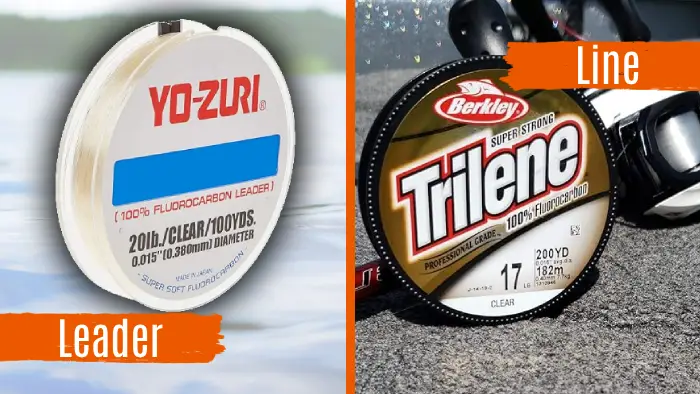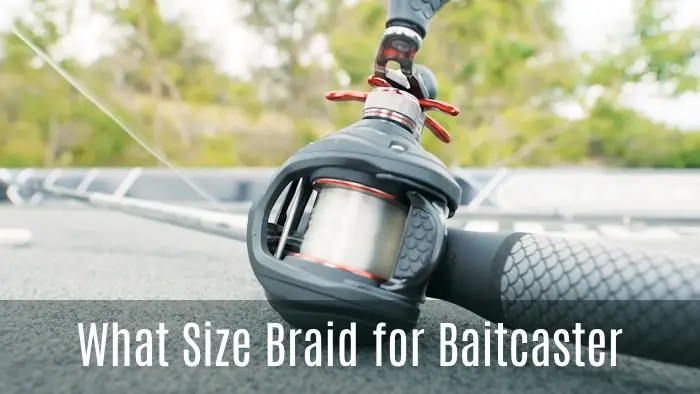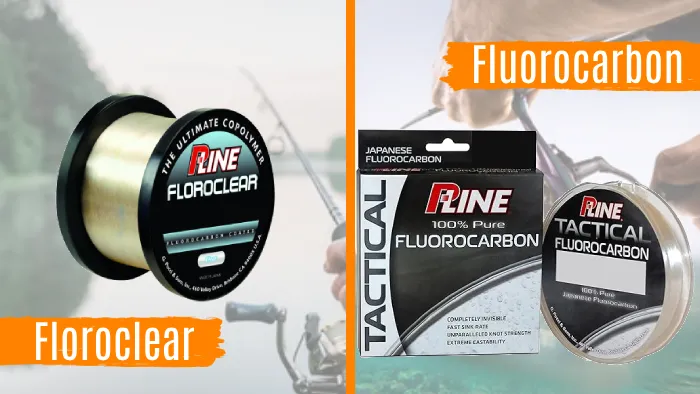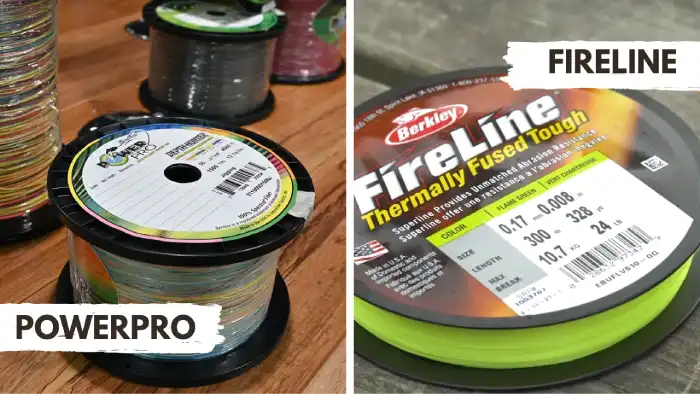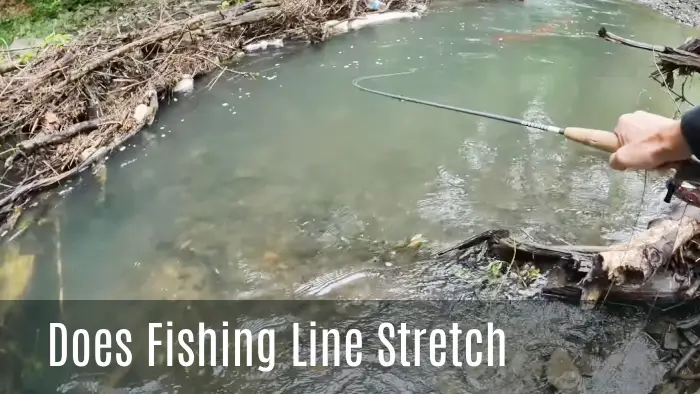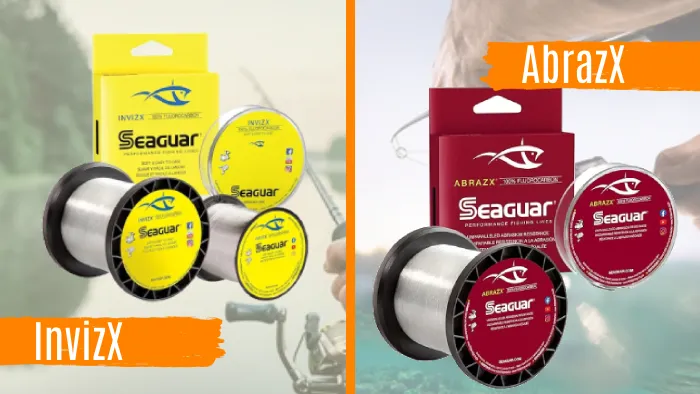Fluorocarbon Leader vs Line: 7 Differences for Optimal Fishing
Fluorocarbon fishing leader and line are two commonly used fishing lines that often get confused with each other. While both fluorocarbon leader and line are made from the same material, there are significant differences between the two.
Fluorocarbon leader is intentionally designed to be stiff and durable, providing strength when used as a fishing leader. Conversely, the fluorocarbon fishing line is considerably softer and more manageable, allowing for easier casting.
Additionally, the purpose they serve also varies. Fluorocarbon fishing leader material is favored for trolling cranks, casting cranks, and jigging applications. In contrast, the fluorocarbon line is recommended for use in crawler harnesses, spinning rigs, and slip bobber fishing.
We will explore all the differences between fluorocarbon leader and fishing line so you can understand when to use each and how they can benefit your fishing experience.
7 Differences Between Fluorocarbon Fishing Leader and Fluorocarbon Fishing Line
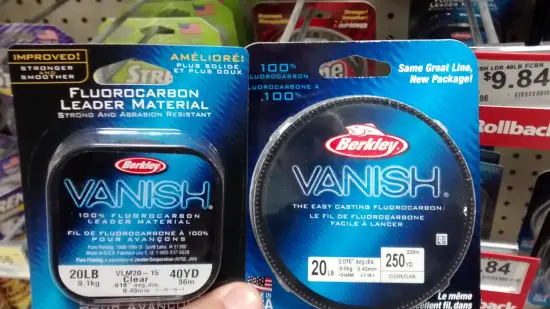
When comparing fluorocarbon fishing leader and fluorocarbon fishing line, several key differences exist.
- Material stiffness and flexibility
- Purpose
- Visibility
- Knot strength
- Shock and abrasion resistance
- Diameter
- Cost
Check out each of the differences between fluorocarbon leader and fluorocarbon fishing line in more detail.
1. Material Stiffness and Flexibility
To understand the distinction between fluorocarbon fishing leader and fluorocarbon fishing line, it’s important to consider their material stiffness and flexibility.
Fluorocarbon leader material is intentionally designed to be stiff, providing strength and durability when used as a fishing leader. This stiffness makes it difficult to cast, so it’s primarily used for its superior strength properties.
On the other hand, fluorocarbon fishing line is significantly softer and more manageable. The addition of plasticizers during the manufacturing process enhances its suppleness, making it suitable for casting. It isn’t as stiff as leader material, allowing for easier casting and manageability.
The flexibility of fluorocarbon line makes it a preferred choice for applications where flexibility is required.
2. Purpose
As you continue to explore the differences between fluorocarbon fishing leader and fluorocarbon line, it’s important to understand their distinct purposes.
Fluorocarbon fishing leader is mainly used for trolling cranks, casting cranks, and jigging applications. Its stiffness allows for better control and precision when working with these techniques.
Conversely, fluorocarbon fishing line is recommended for crawler harnesses, spinning rigs, and leaders used in slip bobber fishing. The flexibility of fluorocarbon fishing line makes it ideal for these types of setups, allowing for natural movement and presentation of baits.
3. Visibility
Fluorocarbon fishing leader and fluorocarbon fishing line differ in terms of their visibility underwater. The leader material, due to its stiffness, may be more visible in the water compared to the fluorocarbon fishing line. However, this visibility can sometimes be advantageous for certain presentations or when using it as a leader to connect to a more visible mainline.
Meanwhile, the fluorocarbon line is known for its near-invisibility in the water. Its refractive index closely matches that of water, making it difficult for fish to detect. This can be a significant advantage when targeting finicky or easily spooked fish, as it reduces the chances of fish being alerted by the presence of the fishing line.
4. Knot Strength
You should frequently check the knot strength when using a fluorocarbon fishing leader or fluorocarbon fishing line to ensure secure connections.
Fluorocarbon leader material is designed to have superior knot strength compared to fluorocarbon line. Its stiffness contributes to better knot performance, providing confidence in your connections to lures or other terminal tackle.
On the other hand, while the fluorocarbon line still offers good knot strength, it may not be as strong as leader material in this regard. Therefore, when using a fluorocarbon fishing line as your mainline, it’s important to choose your knots carefully to ensure secure connections.
5. Shock and Abrasion Resistance
When using fluorocarbon fishing leader or fluorocarbon fishing line, it’s important to consider the differences in shock and abrasion resistance between the two.
Fluorocarbon fishing leader is known for its excellent abrasion resistance. Its stiffness and thicker diameter make it highly resistant to rough structures, sharp objects, and abrasive surfaces in the water. This makes it particularly well-suited for situations with heavy abrasion concerns.
Conversely, fluorocarbon fishing line also offers good abrasion resistance, but it may not be as robust as leader material. The line may be more susceptible to wear and damage in extreme abrasion scenarios.
6. Diameter
A significant distinction between fluorocarbon fishing leader and fluorocarbon fishing line is the difference in their respective diameters.
Fluorocarbon leader material typically has a thicker diameter, ranging from 0.018 inches for 25 lb. test to 0.025 inches for 50 lb. test. This thicker profile provides additional strength and abrasion resistance without adding bulk to the mainline.
In contrast, the fluorocarbon line boasts a thinner diameter, such as 0.017 inches for a 20 lb. test and 0.015 inches for 15 lb. test. The thinner diameter of the fluorocarbon line allows for greater line capacity on the spool and enhances its low-visibility properties.
7. Cost
Moving on to the topic of cost, there are notable differences between the fluorocarbon fishing leader and the fluorocarbon fishing line.
Fluorocarbon leader material tends to be more expensive compared to fluorocarbon line. The price range for leader material starts at approximately $6.14 and can go up to $66.99, depending on factors like pound test strength, brand, and spool length.
Higher pound test strengths and longer spool lengths are usually at the upper end of the price range.
In contrast, the fluorocarbon line is generally more cost-effective, with a price range starting at around $6.44 and going up to $44.98. The cost of a fluorocarbon line varies based on factors such as pound test strength, diameter, brand, and spool length.
So, take these cost differences into account when considering your fishing gear costs for a fishing trip in California or your favorite fishing spot.
Fluorocarbon Leader and Line Comparison Chart
| Difference | Fluorocarbon Leader Material | Fluorocarbon Fishing Line |
| Material Stiffness and Flexibility | Intentionally stiff, not suitable for casting | Softer and more manageable, suitable for casting |
| Purpose | Trolling cranks, casting cranks, jigging | Crawler harnesses, spinning rigs, slip bobber |
| Visibility | May be more visible due to stiffness | Near-invisible in water, reduces visibility |
| Knot Strength | Superior knot strength due to stiffness | Good knot strength, may not be as strong |
| Shock and Abrasion Resistance | Excellent abrasion resistance | Good abrasion resistance, not as robust |
| Diameter | Thicker diameter for added strength | Thinner diameter, allows for greater line capacity |
| Cost | Generally more expensive | More cost-effective option |
How Long should a fluorocarbon leader be?
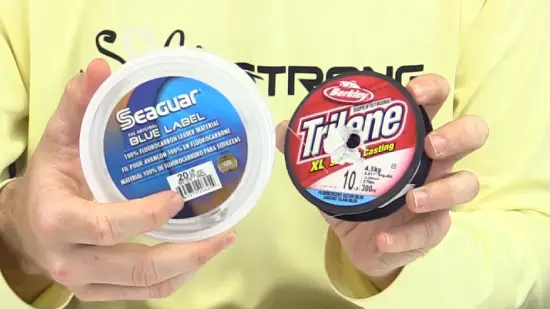
The ideal length for a fluorocarbon leader can vary depending on your fishing scenario and preferences. In many situations, a 2- to 4-foot leader serves as a versatile and middle-of-the-road option. This length balances line management and casting distance, making it a popular choice among anglers.
However, there are times when a shorter leader, around 12 to 18 inches, might be more appropriate, especially in situations where a discreet presentation or a specific setup is required.
The key is to consider the specific fishing conditions and the target species you’re pursuing to determine the most suitable fishing leader length for your needs.
Can you use the fluorocarbon line as your mainline for all types of fishing?
While the fluorocarbon line offers a range of advantages, it may not be the ideal mainline for all types of fishing. To reap the benefits of fluorocarbon, consider using it when you plan on fishing around heavy cover, rough structure, clear water, large and toothy fish, and for species with excellent eyesight like trout.
It excels in scenarios where low visibility, sensitivity, and abrasion resistance are crucial. However, for some fishing applications, such as those in which you don’t require these specific advantages, other types of fishing lines like monofilament or braided line may be more suitable.
Additionally, in certain freshwater situations, fluorocarbon-coated monofilament can serve as an excellent mainline, particularly for species like walleye and trout. The choice of mainline should align with your fishing conditions and the characteristics you need to maximize your success.
Use the Right Fishing Line for Your Fishing Success
Understanding the differences between fluorocarbon leader and fluorocarbon fishing line is crucial for tailoring your tackle to specific fishing conditions.
The contrast in material stiffness, knot strength, visibility, and purpose allows you to make informed choices. Whether you’re pursuing toothy game fish, casting in clear waters, or setting up a finesse rig, the right choice between these two options can make all the difference in your angling success.
So, consider your fishing scenario, your target species, and the advantages of each line type to make the most of your time on the water. Choose wisely, and may your next fishing adventure be a memorable one.

